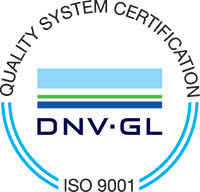 See More Photos
See More Photos
The Electropolishing Process Provides:
Better Physical Appearance
- No fine directional lines from abrasive polishing.
- Excellent light reflection and depth of clarity.
- Bright, smooth polish; uniform luster of shaped parts.
Enhanced Mechanical Properties
- Less friction and surface drag.
- Increased production and duty cycles in process equipment. Electropolishing greatly reduces fouling, plugging, scaling and product build-up.
- Surface retains the true grain structure and properties of the bulk metal.
- Fatigue strength is not reduced. Electropolishing allows the true fatigue strength of a part to be accurately determined.
- Higher fatigue strength can be promoted by particle-blasting the surface to reintroduce compressive stress without losing electropolishing's advantages.
- Stress-relieving of the surface.
- Reduces galling of threads on stainless and carbon steel and other alloys.
Better Corrosion Protection
The Benefits of Electropolishing come from producing maximum tarnish and corrosion resistance in many metals and alloys. Stainless steel contains metallic and non-metallic inclusions, which are unavoidably included during manufacture. Mechanical polishing not only fails to remove inclusions, but also tends to push them further into the surface and even increase them by further pick-up of abrasive materials. These inclusions eventually can become points of corrosion.
Ease of Cleaning
- Substantially reduces product contamination and adhesion due to the microscopic smoothness of an electropolished surface (much like a glass surface).
- Decreases cleaning time. Electropolished surfaces can be effectively hydroblasted in less time and with less pressure. Some companies report that electropolished process equipment surfaces have reduced cleaning time by more than 50 percent.
- Improves sterilization and maintenance of hygienically clean surfaces for food, beverage, drug, and chemical processing equipment.
- Provides best passivation of stainless steel. Unipotentializes stainless steel with the oxygen absorbed by the surface, creating a monomolecular oxide film.
- Decarburizes metals.
- Removes cold-worked metal oxides.
For Special Effects
- Simultaneously deburrs as it polishes.
- Radiuses or sharpens edges, depending on racking position.
- Polishes areas inaccessible by other methods.
- Reveals flaws in metal surfaces undetectable by other means. Electropolishing is one of the most effective inspection tools for judging metal surfaces.
- Provides a correct and reproducible microhardness on the metal surface.
- Increases magnetism of parts by approximately 20 percent.
- Allows micromachining of metal and alloy surfaces.
- Processes large numbers of parts simultaneously.
- Enables metal to be formed with fewer passes and annealing steps.
Comparison Table
| Mill No. | Grit No. | Before Electropolishing Surface Roughness, Ra | After Electropolishing* Surface Roughness, Ra | ||
|---|---|---|---|---|---|
| micrometer | microinches | micrometer | microinches | ||
| 3 | 60 | 3.56 max | 140 max | 1.78-2.25 | 70-90 |
| 4 | 120 | 1.14 max | 45 max | 0.57-0.75 | 23-30 |
| 4 | 180 | 0.64 max | 25 max | 0.32-0.40 | 13-16 |
| 7 | 240 | 0.20-0.51 | 8-20 | 0.10-0.26 | 4-10 |
| 8 | 320 | 0.15-0.38 | 6-15 | 0.08-0.19 | 3-8 |
| 8 | 500 | 0.10-0.25 | 4-10 | 0.05-0.13 | 2-5 |
| * Values are Approximate. Electropolishing generally reduces surface roughness readings of a non-electropolished surface by 50 percent. | |||||
 Delstar
Delstar